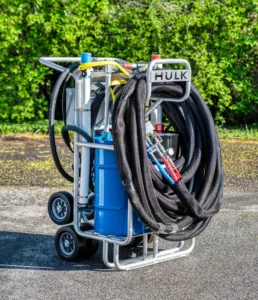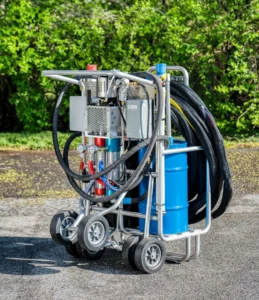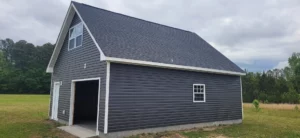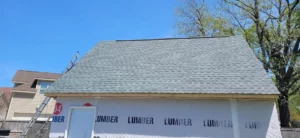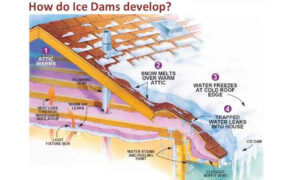At Andrews Roofing, we are committed to researching and educating ourselves on innovative, high-quality roofing products and technology so we can provide them for our residential and commercial clients in Hampton Roads.
That’s why we’ve invested in the HULK Spray Rig, a state-of-the-art adhesive application system designed specifically for installing rigid board insulation on flat and low-slope commercial roofs. This advanced equipment allows us to provide a more efficient, consistent, and durable insulation installation—giving your roof better long-term performance.
What Makes the HULK Machine So Effective?
The HULK Spray Rig is an automated, self-propelled system that precisely dispenses low-rise polyurethane foam adhesive in pre-measured patterns. This ensures even coverage across the entire roof deck, eliminating the inconsistencies that can come with manual application. Once the adhesive is applied, the machine uses its built-in roller system to firmly press the rigid board insulation into place, creating a strong, uniform bond between the insulation and the substrate.
The Benefits of Using the HULK Machine
By incorporating this cutting-edge equipment into our installation process, we provide our commercial roofing clients with several key advantages:
- Stronger Adhesion & Wind Resistance: The precision application ensures a secure bond, reducing the risk of insulation shifting or lifting due to wind uplift, something we are always thinking about in our storm and hurricane prone region.
- Faster Installation: The HULK machine speeds up the process significantly, reducing labor time and getting your roof installed quicker with minimal disruption to your business.
- Improved Energy Efficiency: Properly adhered insulation minimizes gaps and air pockets, helping to enhance thermal performance and lower energy costs.
- Reduced Waste & Cleanup: The controlled application minimizes adhesive waste and overspray, resulting in a cleaner job site and a more environmentally friendly installation.
Hampton Roads Commercial Roofing Specialists
We are proud to bring this industry-leading technology to our commercial roofing projects in Southeast Virginia. If you are looking for a high-performance, energy-efficient roofing system that will stand the test of time, contact Andrews Roofing today to learn how the HULK advanced installation methods can benefit your business and property.


